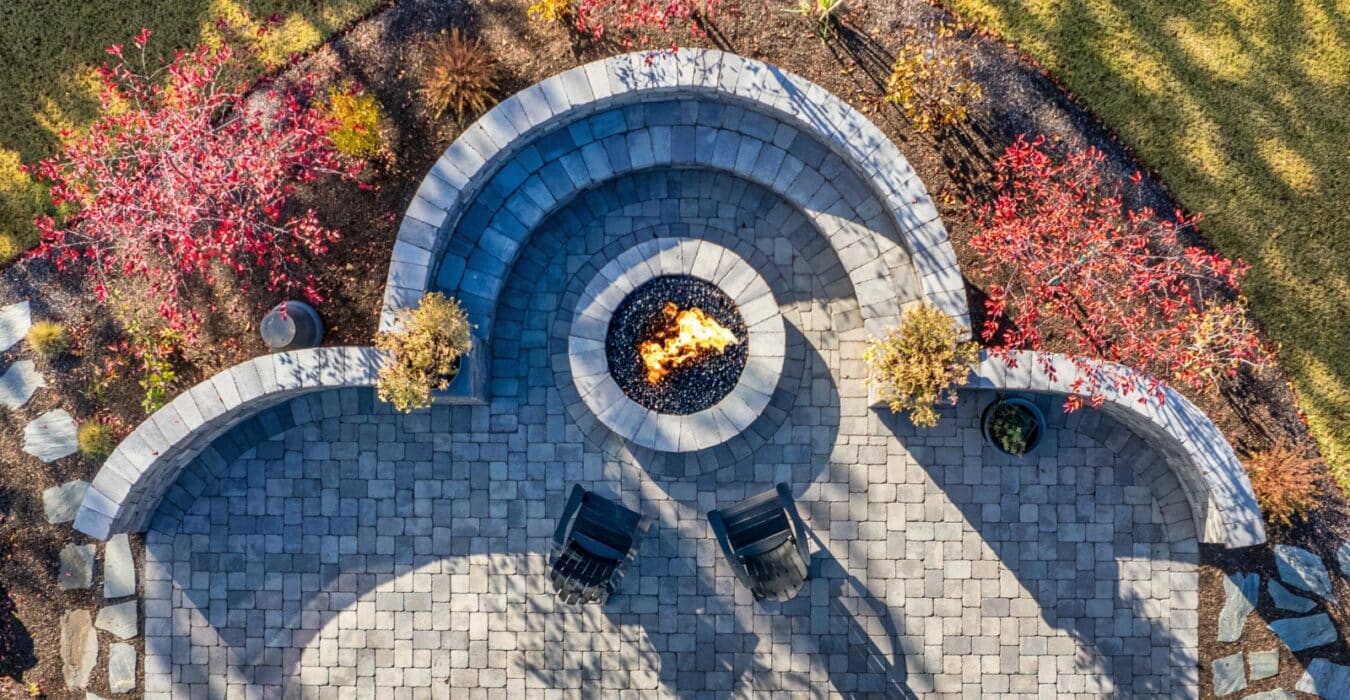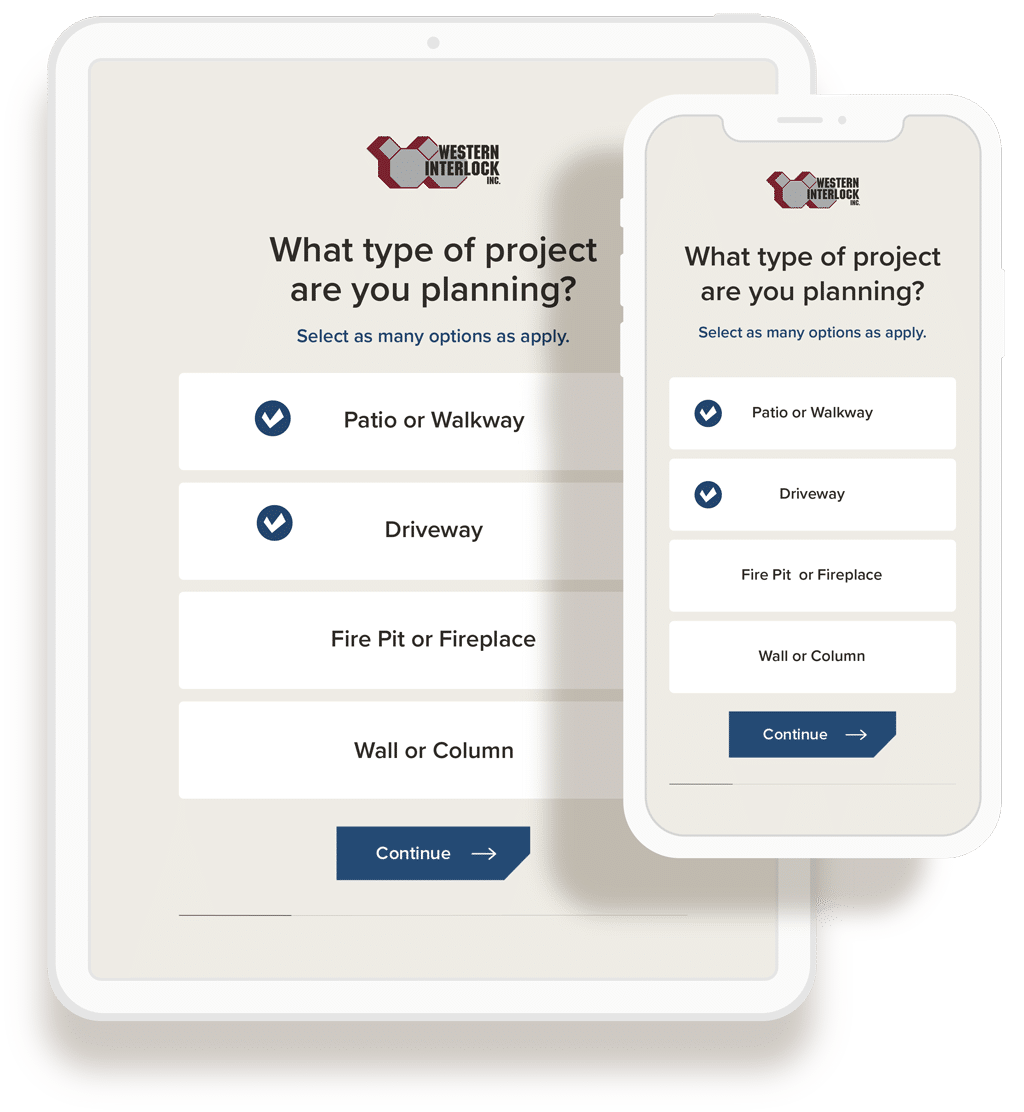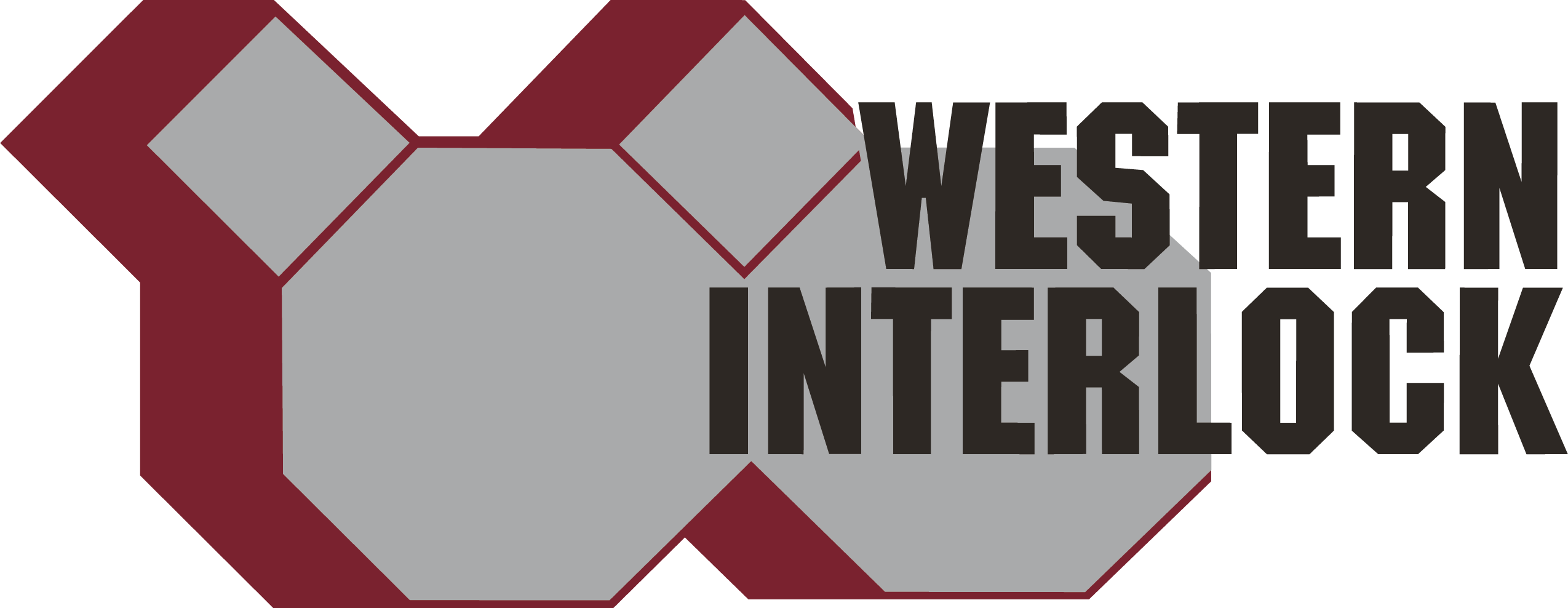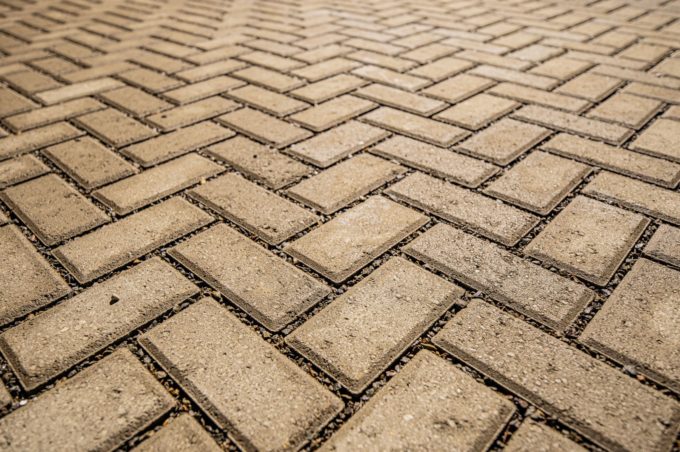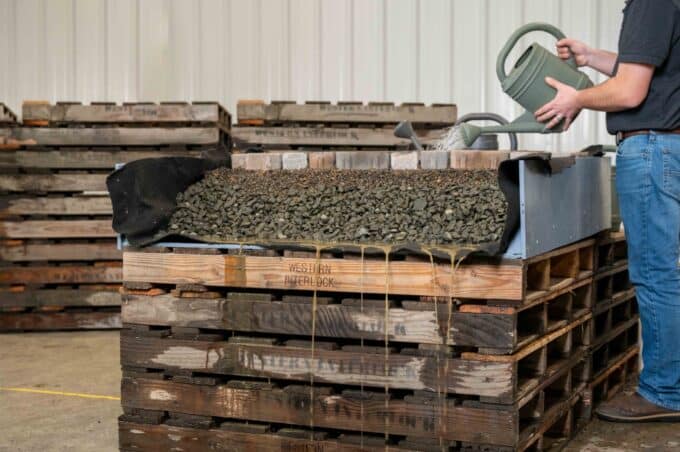Building your own stone fire pit is an exciting project—one that adds beauty, warmth, and connection to your outdoor space. One of the most common questions we hear is: What do you put at the bottom of a stone fire pit?
At Western Interlock, our fire pit kits are thoughtfully designed for small backyard fires that bring people together. Whether you’re toasting marshmallows with your kids or enjoying a quiet evening under the stars, we’re here to help you build something you can count on—and be proud of.

What Do You Put at the Bottom of A Stone Fire Pit? – Start With a Solid Foundation
A strong foundation gives you confidence that your fire pit will stay safe, level, and looking great for years to come. That’s why we recommend starting with a 3″ layer of compacted ¾” minus gravel. This gravel includes fine particles that lock together when compacted, creating a strong and well-draining base.
To build your base, begin by excavating 3″ deep in the fire pit area. Then, fill the space with ¾” minus gravel, making sure it spreads evenly across the surface. Finally, level and compact the gravel using a hand tamper or plate compactor to create a durable foundation you can trust for years to come.
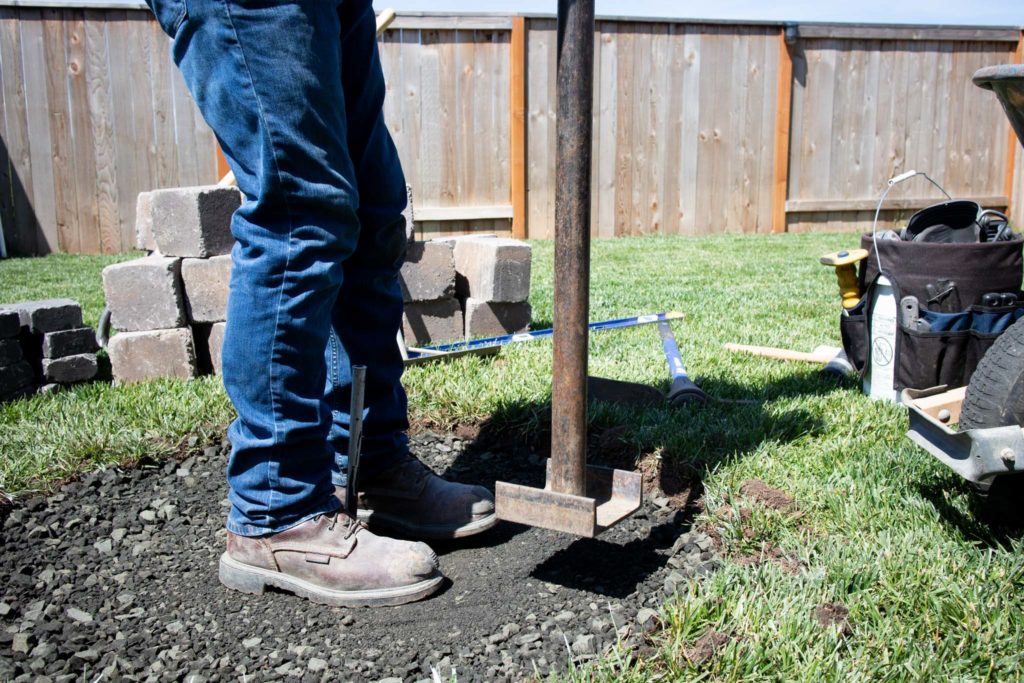
Is the Gravel Base Enough?
For most homeowners, the answer is yes.
Western Interlock fire pit kits are intended for casual use with small backyard fires. The compacted gravel base provides adequate drainage, fire safety, and long-term durability in those conditions. If you’re using your fire pit a few times a month and keeping the flames moderate, there’s no need to add anything else inside the ring.
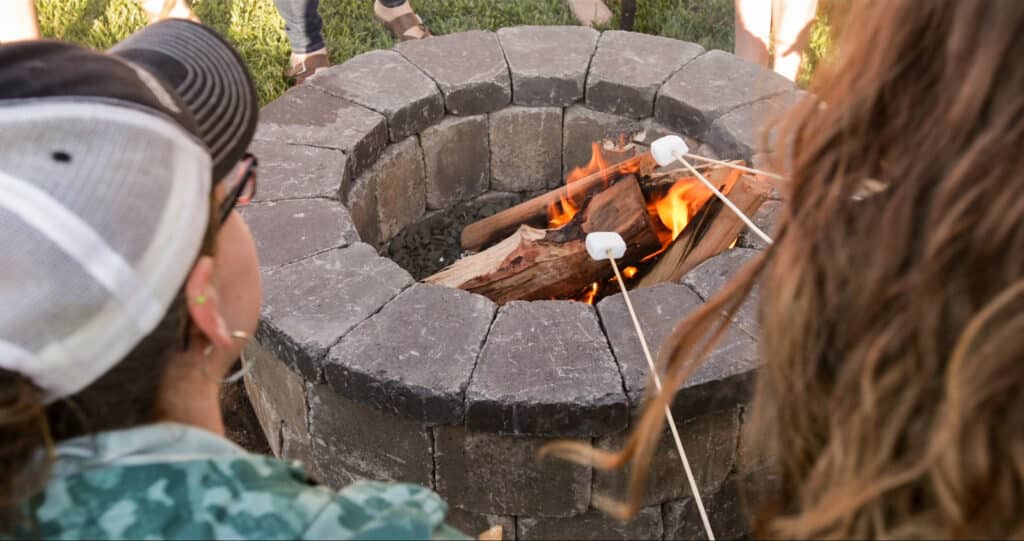
When to Add a Heat Buffer
If you plan to use your fire pit frequently or burn hotter fires (e.g., hardwoods), it may be wise to add a thin top layer inside the fire ring for extra protection. Here are a few options:
- Lava rock (2–4″): Lightweight and heat-resistant. A popular choice for its durability and airflow.
- Fire-rated sand (1–2″): Inexpensive and helps evenly distribute heat.
These materials sit on top of the gravel inside the ring and provide a buffer between the flame and the block walls, helping to extend the life of your fire pit.
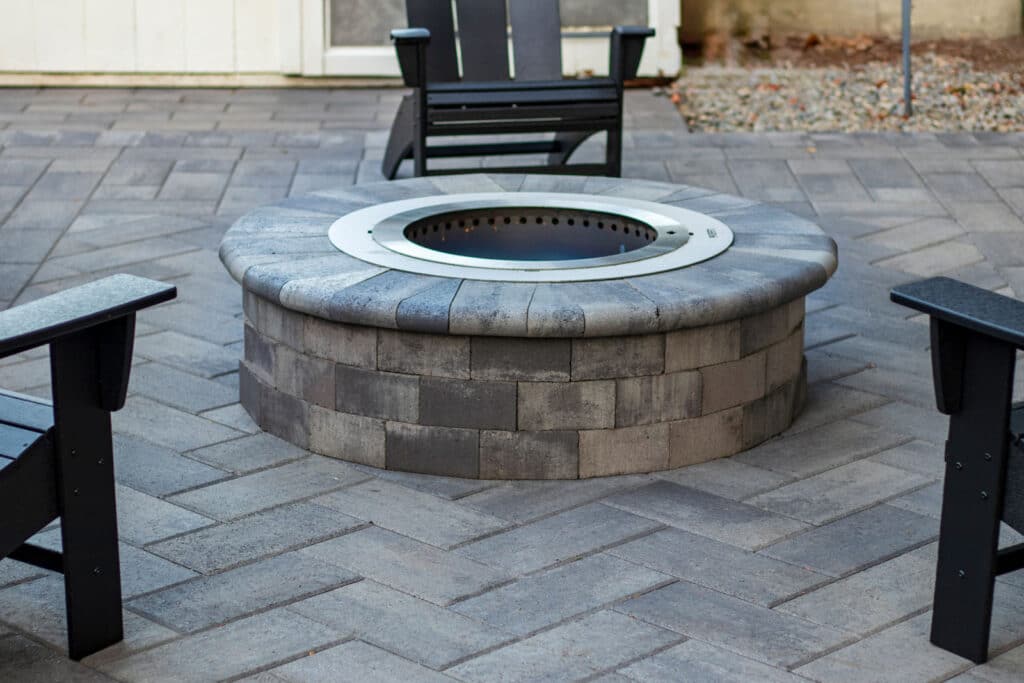
Thinking About a Metal Insert?
If you’re looking for even more protection—or just want a clean, finished look—you might consider using a steel fire pit insert. These metal rings are designed to fit inside your fire pit and act as a barrier between the flames and the block walls.
A steel fire pit insert offers several benefits. It protects your fire pit walls from direct flame and high heat, helps extend the life of your stone blocks and adhesive, and adds a clean, polished finish to the inside of your fire pit.
Fire pit inserts are completely optional for Western Interlock kits, but they’re a smart upgrade if you plan to burn hotter fires or want your fire pit to last even longer.
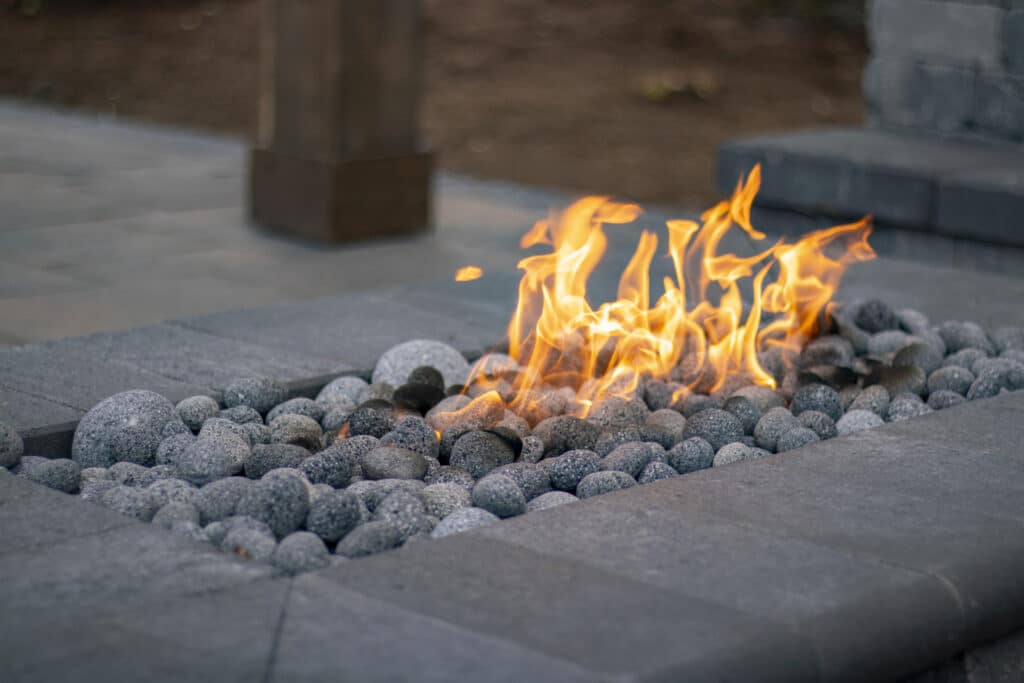
What If I’m Using a Gas Burner?
Gas fire pits are a great option for clean, consistent flames with low maintenance. If you’re building a gas-powered fire pit using a Western Interlock kit, you’ll still start with a 3″ compacted base of ¾” minus gravel. This provides the same solid support and drainage as it does for wood-burning fire pits, but the materials placed above the base—and the way you house the burner—will be slightly different to accommodate the gas components.
To safely contain the burner and protect the walls of your fire pit, use a steel fire pit insert or burner tray. These help support the burner components and shield the surrounding blocks from direct heat.
Once your burner is in place, fill the interior with materials rated for high-heat gas applications, such as lava rock, which allows airflow and supports the burner, or fire glass and ceramic logs or stones, which add decorative appeal and enhance the flame presentation.

Final Answer: What Do You Put at the Bottom of A Stone Fire Pit?
At Western Interlock, we believe building a fire pit should be simple and rewarding. That’s why our kits are designed with flexibility, durability, and beauty in mind—whether you’re installing a wood-burning setup or a clean-burning gas burner. Start with a compacted gravel base, consider a heat buffer or insert if needed, and you’ll be well on your way to enjoying more evenings outside with the people who matter most.
Ready to start your project?
Explore our fire pit kits to find the style and setup that’s right for your space.
Looking for more expert tips? Check out our full library of hardscape tutorials on the blog: DIY with WI.


